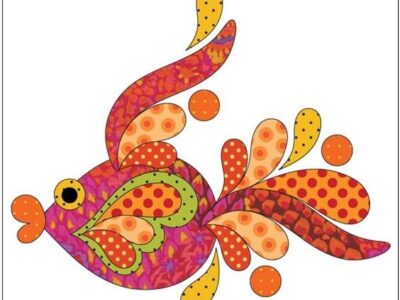
Applique embroidery is a versatile and creative form of fabric art that involves stitching fabric pieces onto a base material to form intricate designs. To bring these designs to life using an embroidery machine, you need to digitize them first. This process, known as applique embroidery digitizing, converts artwork or patterns into a machine-readable format, making it possible to automate the embroidery process.
For beginners, the concept of applique embroidery digitizing services may sound intimidating, but it’s easier than you think. This guide will walk you through the process step by step, explaining how to create your own applique embroidery designs using simple methods. Whether you’re looking to personalize your apparel, craft unique gifts, or offer custom embroidery services, mastering applique digitizing is a rewarding skill that can transform your creative projects.
Understanding Applique Embroidery Digitizing
Before diving into the practical steps of applique embroidery digitizing services, it’s important to understand the basics. Applique, as a technique, involves cutting pieces of fabric in specific shapes and stitching them onto a larger fabric background. The key difference between regular embroidery and applique is that, in applique, fabric is used to fill areas of the design rather than just thread.
Digitizing for applique means using software to create a design that tells an embroidery machine where to place the fabric and how to stitch around it. The digitized file contains instructions for placement lines, tack-down stitches, and the final satin or decorative stitches that finish the edges of the fabric pieces.
Why Choose DIY Applique Embroidery Digitizing Services?
Opting for DIY applique embroidery digitizing services offers several advantages:
Creative Control: You can create completely personalized designs, from simple monograms to complex patterns, tailored to your specific needs.
Cost Savings: By digitizing your own designs, you avoid outsourcing costs for professional digitizing services. This is especially beneficial if you plan to create multiple designs over time.
Skill Development: Learning how to digitize applique embroidery opens up new opportunities for crafting and business ventures. Whether you want to sell custom designs or create unique gifts, this skill will be invaluable.
Quick Turnaround: With DIY digitizing, you have the flexibility to create and edit designs on your own schedule, speeding up production for personal or business projects.
Tools and Materials You Need
To begin with applique embroidery digitizing services, you’ll need some essential tools and materials:
Embroidery Digitizing Software: This is a must-have for digitizing your designs. There are many options available, such as Wilcom, Hatch, or Brother PE-Design. These software programs allow you to create and edit designs that can be read by embroidery machines.
Embroidery Machine: You’ll need an embroidery machine that can read digitized designs. Most machines accept file formats like PES, DST, or EXP, so make sure your software can export in these formats.
Applique Fabric: Choose fabrics that contrast well with your base fabric. The fabric pieces should be easy to cut and manipulate during the applique process.
Stabilizer: To ensure your fabric stays in place and doesn’t shift or pucker during stitching, use an appropriate stabilizer for the type of fabric you’re working with.
Embroidery Thread: High-quality embroidery thread is essential for creating smooth, durable stitches that secure the applique fabric and finish the edges.
Step-by-Step Guide to DIY Applique Embroidery Digitizing
Now that you have an understanding of the tools and materials required, let’s dive into the easy steps for creating your own applique embroidery designs through digitizing.
Step 1: Create or Import Your Design
The first step in applique embroidery digitizing is selecting or creating the design you want to use. You can create a custom design from scratch or use existing artwork or logos. The design should consist of simple shapes that can easily be cut from fabric, as applique works best with clean, bold outlines.
Once you have your design, import it into your embroidery digitizing software. The software will allow you to convert the image into a machine-readable format and add specific stitching instructions for the applique process.
Step 2: Set Up Placement Lines
Placement lines are the first step in the stitching process. These lines indicate where the fabric pieces will be placed on the base material. To set up the placement lines in your software, you’ll use a running stitch. This type of stitch is a single line that acts as a guide for placing the fabric.
When digitizing placement lines, ensure that they follow the outline of the shapes in your design. These lines should be clear and precise so that the fabric is positioned correctly when the machine begins stitching.
Step 3: Add Tack-Down Stitches
After the placement lines are stitched, the next step is to secure the fabric in place using tack-down stitches. Tack-down stitches temporarily hold the fabric pieces onto the base material, ensuring they don’t shift during the final stitching process.
In your digitizing software, create a tack-down stitch using a zigzag or running stitch. This stitch should cover the same area as the placement lines, but it needs to be robust enough to hold the fabric firmly in place.
Step 4: Digitize the Final Satin Stitch
Once the fabric is secured with tack-down stitches, the final step in the embroidery process is to add a satin stitch or decorative edge stitch. The satin stitch finishes the edges of the applique fabric, giving the design a clean, polished look.
Using your digitizing software, create a satin stitch that runs over the edges of the fabric, covering the raw edges completely. You can adjust the width and density of the satin stitch to suit the fabric and design. If you prefer a more decorative look, you can experiment with other types of stitches, such as a blanket stitch or motif stitch.
Step 5: Test Your Design
Before proceeding with your final project, it’s important to test your digitized design on a scrap piece of fabric. This will allow you to check if the placement lines, tack-down stitches, and satin stitches are all aligned properly. Testing ensures that the design stitches cleanly and that the fabric pieces stay in place during the embroidery process.
If you notice any issues, such as misalignment or thread tension problems, go back into your digitizing software and make the necessary adjustments before moving on to the final piece.
Tips for Successful Applique Embroidery Digitizing Services
Choose the Right Fabric: The fabric you select for your applique should complement your base material and be easy to work with. Avoid fabrics that are too thick or stretchy, as they can cause difficulties during stitching.
Adjust Stitch Density: Ensure that the final satin stitch has the correct density. If the stitch is too thin, it won’t cover the edges of the fabric properly. If it’s too thick, it could cause bunching or puckering.
Consider Fabric Shrinkage: Pre-wash your applique fabric to account for any shrinkage that might occur after the first wash. This will prevent the applique from distorting on the finished project.
Keep Designs Simple: Applique works best with simple shapes and bold outlines. Intricate designs can be difficult to cut from fabric and might not translate well into applique.
Experiment with Stitching: Don’t be afraid to try out different types of stitches beyond the standard satin stitch. Decorative stitches can add extra flair to your design and make it truly unique.
Conclusion
DIY applique embroidery digitizing services allow you to unleash your creativity and bring custom fabric designs to life. By mastering the basic steps of applique digitizing—creating placement lines, adding tack-down stitches, and finishing with satin or decorative stitching—you can create stunning, professional-looking embroidery projects. Whether you’re looking to personalize your own items or offer applique embroidery digitizing services to clients, this guide provides the foundation for success. With practice and experimentation, you’ll be able to create beautiful applique designs that stand out and impress.









